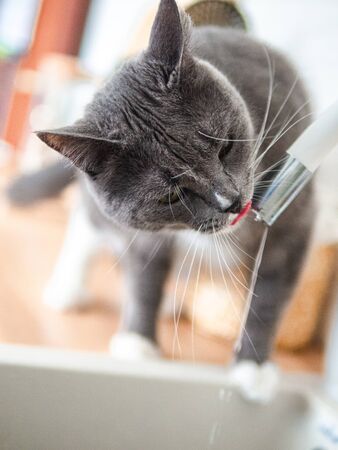1. Understanding Your Cats Behavior
Cats are known for their independent nature, which is one of the main reasons they don’t always respond to calls like dogs do. Unlike dogs, which have been bred for thousands of years to follow human commands, cats evolved as solitary hunters. This means they don’t have the same instinct to obey vocal cues.
Why Cats Don’t Always Respond to Their Name
Many cat owners assume their feline friends ignore them out of stubbornness, but that’s not entirely true. Cats communicate differently from dogs and rely more on body language and scent rather than vocal commands. Here are some key reasons why your cat may not immediately come when called:
| Reason | Explanation |
|---|---|
| Independent Nature | Cats prefer making decisions on their own rather than following commands. |
| Lack of Conditioning | If a cat has never been trained to associate its name with positive reinforcement, it may not see a reason to respond. |
| Sensory Distractions | Cats have strong senses and may be focused on something else in their environment. |
| No Immediate Reward | Cats learn best when there’s a direct benefit for them, like treats or affection. |
The Role of Positive Reinforcement in Training
Cats may not naturally respond to being called, but they can be trained using positive reinforcement techniques. Unlike punishment, which can make a cat fearful or anxious, positive reinforcement encourages them to repeat behaviors that lead to rewards. By understanding how your cat thinks and what motivates them, you can successfully train them to come when called.
2. Choosing the Right Cue and Reward
Training your cat to come when called starts with picking a clear and distinct cue that they can easily recognize. Cats respond best to consistent sounds, so choosing the right cue and reward will help reinforce their behavior.
Pick a Distinct Call or Sound
Cats may not always respond to their names like dogs do, so its important to select a specific sound or call that stands out. Here are some options:
| Type of Cue | Example |
|---|---|
| Verbal Call | Saying your cat’s name in a high-pitched tone |
| Clicking Sound | Mouth clicking or using a clicker device |
| Whistling | A short, consistent whistle sound |
| Treat Bag Noise | Shaking a treat bag gently |
The key is to use the same cue consistently. If you mix different cues, your cat may get confused and not associate them with coming to you.
Use Treats or Positive Reinforcement
Cats are more likely to respond when there’s something in it for them. Using treats or other forms of positive reinforcement will encourage them to come when called.
Selecting the Right Reward
Your cats favorite treat will be the best motivator. Some good reward options include:
- Treats: Small pieces of tuna, chicken, or commercial cat treats.
- Praise: Gentle petting and verbal praise like “Good kitty!”
- Toys: Playing with their favorite toy immediately after they come.
- Cuddle Time: If your cat enjoys being held, offer affection as a reward.
The Importance of Timing
The timing of the reward is crucial. Give your cat the treat or praise immediately after they come to you. This helps them associate the action with the positive outcome.
Avoid Negative Reinforcement
Never punish your cat if they don’t come right away. Negative reinforcement can make them afraid of responding to your call in the future. Instead, be patient and keep training sessions positive and rewarding.
By using a consistent cue and rewarding your cat appropriately, you’ll set a strong foundation for successful recall training!

3. Creating a Positive Training Environment
Setting up the right environment is key to successfully training your cat to come when called. Cats learn best when they feel safe, comfortable, and free from distractions. By creating a positive training space, you can help your cat associate training sessions with enjoyable experiences.
Train in a Quiet and Familiar Space
Cats can be easily distracted by loud noises and unfamiliar surroundings. To maximize their focus, choose a quiet area in your home where your cat feels secure. This could be a favorite room or a peaceful corner with minimal foot traffic.
Keep Sessions Short and Stress-Free
Cats have short attention spans, so training sessions should be brief—about 5 to 10 minutes at most. If your cat starts losing interest, take a break and try again later. Keeping sessions fun and stress-free encourages learning and prevents frustration for both you and your cat.
Use Positive Reinforcement
Rewarding your cat for responding correctly helps reinforce good behavior. Treats, praise, or gentle petting can all serve as positive reinforcement. Make sure to use rewards your cat loves to keep them motivated.
| Do | Dont |
|---|---|
| Choose a quiet and familiar space | Train in noisy or unfamiliar environments |
| Keep training sessions short (5-10 minutes) | Make sessions too long or overwhelming |
| Use treats or praise as rewards | Punish or scold if they don’t respond |
| Be patient and consistent | Expect immediate results |
4. Starting with Short Distances
Begin training with small distances, gradually increasing as your cat becomes familiar with the command. Cats learn best through positive reinforcement and repetition, so starting with short distances helps them understand what you expect.
Begin in a Quiet Environment
Choose a quiet space where your cat feels comfortable and there are minimal distractions. This will help your cat focus on you and the training process.
Use Treats or Favorite Toys
Hold a treat or a favorite toy and call your cat’s name in a friendly tone, followed by the command, such as “Come” or “Here.” When your cat responds and moves toward you, immediately reward them with the treat or toy.
Gradually Increase the Distance
Once your cat reliably comes to you from short distances, start increasing the space between you and your cat. Move a few feet farther each time while continuing to use the same command and rewards.
Training Progression Guide
| Distance | Training Focus |
|---|---|
| A few feet | Establish initial response to command |
| Across the room | Reinforce consistency with treats |
| From another room | Build reliability even when out of sight |
| Around the house | Ensure strong response in different environments |
Avoid Rushing the Process
Cats learn at their own pace. If your cat seems hesitant or uninterested, go back to shorter distances and reinforce positive behavior before moving forward again.
5. Reinforcing Good Behavior Consistently
Training your cat to come when called takes time, patience, and regular practice. The key to success is reinforcing good behavior consistently so that your cat understands what is expected and responds reliably.
Practice Regularly
Cats learn best through repetition. Try to practice calling your cat at least once or twice a day. Keep the training sessions short—just a few minutes each time—to keep your cat engaged and prevent frustration.
Use Positive Reinforcement
Each time your cat comes when called, reward them immediately with their favorite treat, verbal praise, or gentle petting. This helps them associate responding to their name with positive experiences.
Types of Rewards
| Reward Type | Example |
|---|---|
| Treats | Small pieces of tuna, chicken, or store-bought cat treats |
| Praise | Saying “Good job!” in a happy tone |
| Affection | Petting or gentle chin scratches |
| Toy Play | A quick play session with a favorite toy |
Avoid Negative Reactions
If your cat doesn’t respond immediately, avoid scolding or punishing them. Negative reinforcement can make them fearful and less likely to come when called. Instead, stay patient and try again later with a more enticing reward.
Stay Consistent with Commands
Always use the same call or cue when training your cat. Whether it’s their name, a specific word like “come,” or a sound like a clicking noise, consistency helps reinforce the behavior over time.
Gradually Increase Distance
Once your cat reliably comes when called from a short distance, start practicing from farther away. You can also try calling them from different rooms in the house to strengthen their response in various situations.
Create a Routine
Cats thrive on routine. If possible, train them at the same time each day, such as before meals or during playtime. This makes the training process more predictable and effective.
The more you reinforce the behavior with patience and consistency, the stronger your cat’s response will become. Over time, they’ll learn to come when called naturally, making life easier for both of you!


